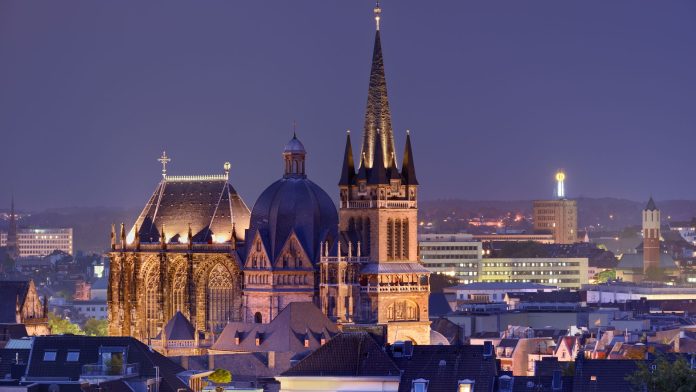[ad_1]
In open Europe, the neighboring countries ensure constant cultural exchange. Things were completely different in the past, such as in Lere la Tepe, where many villages could end up isolated because of their location near the border.
Konstanz: What to See in Lake Constance
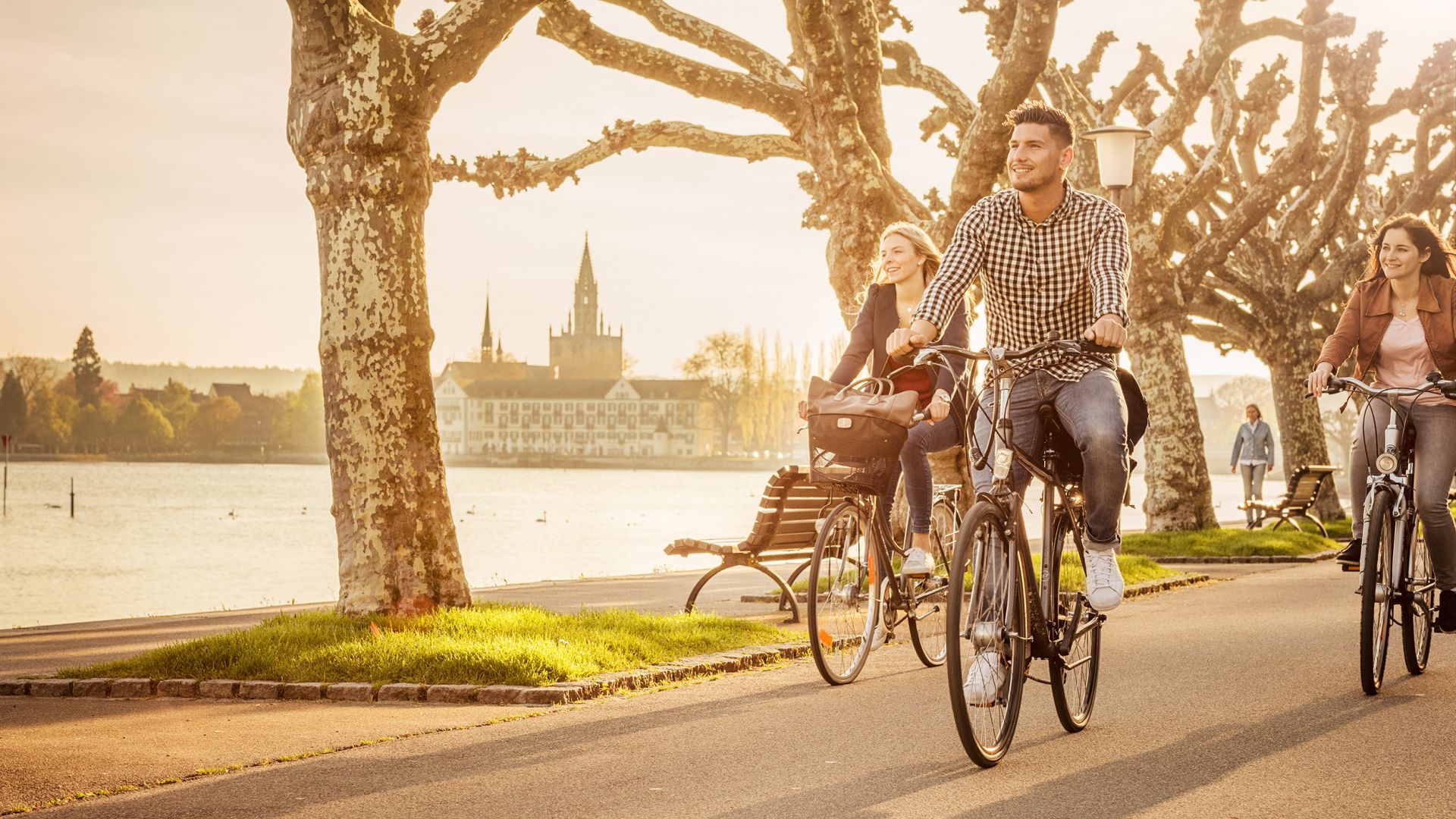
Konstanz: Bike tour along the Seestrasse
©Marketing & Tourism Konstanz (Dagmar threshold)
Leave the fences and walls! Another proof that borders can be remade in a different way was given in 2007 by Johannes Dörflinger from Konstanz, who created the world’s first “art border” – with 22 large Tarot images. These run right along the border between Switzerland and Germany and are even closer to the already cramped cities of Kreuzlingen and Konstanz. Due to its location on Lake Constance, Austria (and Liechtenstein in the hinterland) can also be reached quickly by boat (the Lake Constance circuit is also popular), which would complete a quarter of the country. But why would you leave the largest city on the lake, where the pope was elected at the Council of Constance in 1417? With its beautiful old town and great museums, it offers many reasons to stay. And if you are still looking for reasons to take the 193 steps to the observation deck of the magnificent church: the view of the Rhine, the Alps and the lake is simply wonderful. The nearby flower island of Mainau is best seen from up close.
Görlitz: Where Germany Rises
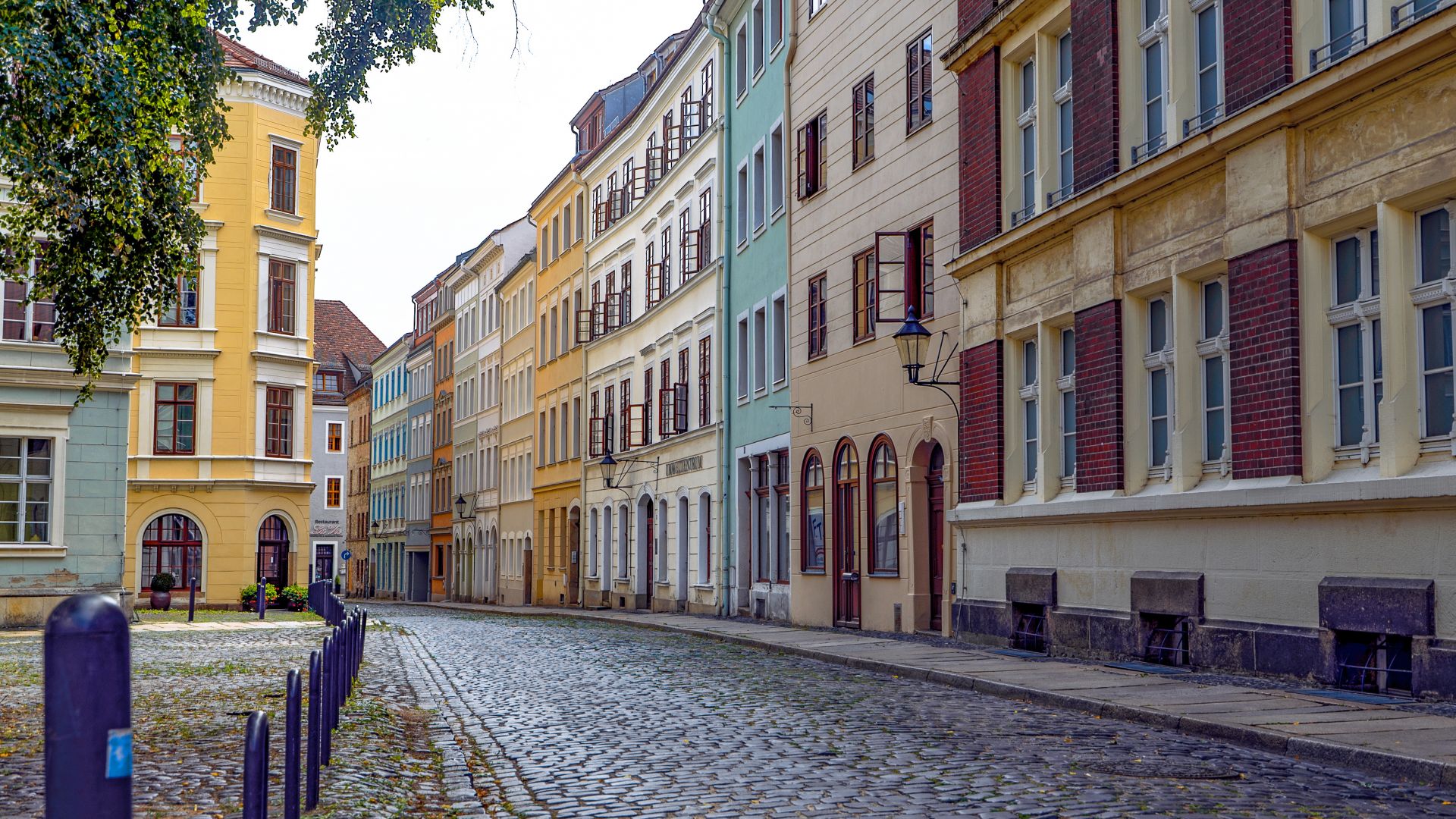
Görlitz: cobblestones in the old town, Via Regia
©AdobeStock (luhmediaart)
Efforts to control time have been around since ancient times. One has to do with an eastern German city. The 15th meridian runs through a small town on the Lusatian Neisse, commemorated by a granite globe in the city park. In fact, the standard time in the German Empire was established here in 1893, “Görlitz Time” as a precursor to Central European Time (CET). Görlitz is still the only city where the sun reaches its peak at exactly twelve o’clock. Times were not always warm, especially after World War II. Although the city was protected from the bombs, it was not avoided to be divided into the Saxon and the Polish part. Today, Zgorcelec residents cross the Friendship Bridge regularly, and Hollywood directors à la Quentin Tarantino make trips to “Görliwood”. The reason: an old town worthy of films with house facades from the Renaissance, Baroque, Wilhelminian style and Art Nouveau. More than 100 films have been filmed among the nearly 4,000 monuments. You can also make a few wins in the world premiere. The Görlitzers were again ahead of their time in 1899.
Saarbrücken: Beautiful parts, baroque architecture
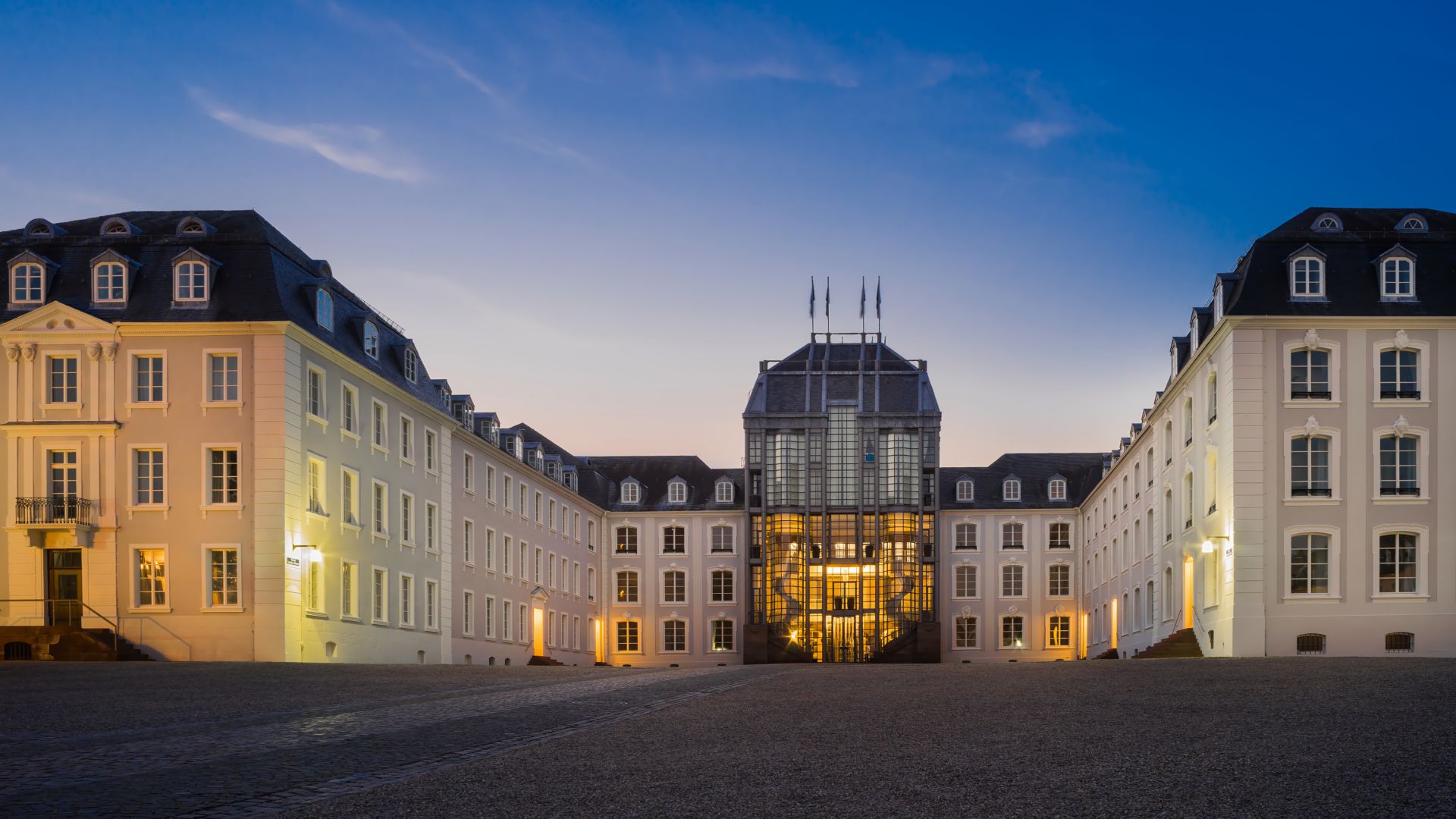
Saarbrücken: Saarbrücken Castle at dusk
©Adobe Stock (Fotoschlick)
Some situations are not moving, but they are fun. However, Saarbrücken tops the list of “the sweetest cities in Germany”, which identifies the most bakeries and pastries per 1,000 inhabitants. In addition to regional classics such as “Krimmelkuche”, this can also be attributed to many French dishes à la éclaires and mille-feuille. Due to the proximity to the border, these things continue to be served in cafes – especially in the central market of St. John. However, French is still in the air, which makes sense given the Saarland’s eventful history. Crazy: People born before 1945 had to change their nationality four times. Friedrich Joachim Stengel was born earlier. In the middle of the 18th century, as the court architect of the princes of Nassau-Saarbrücken, he gave the medieval building on both banks of the Saar a baroque look that is still popular today. In addition to the city palace, there is also the impressive Ludwigskirche, which forms a unique juxtaposition with the nearby palaces and residences of officials.
Aachen: A lot of history in the triangle
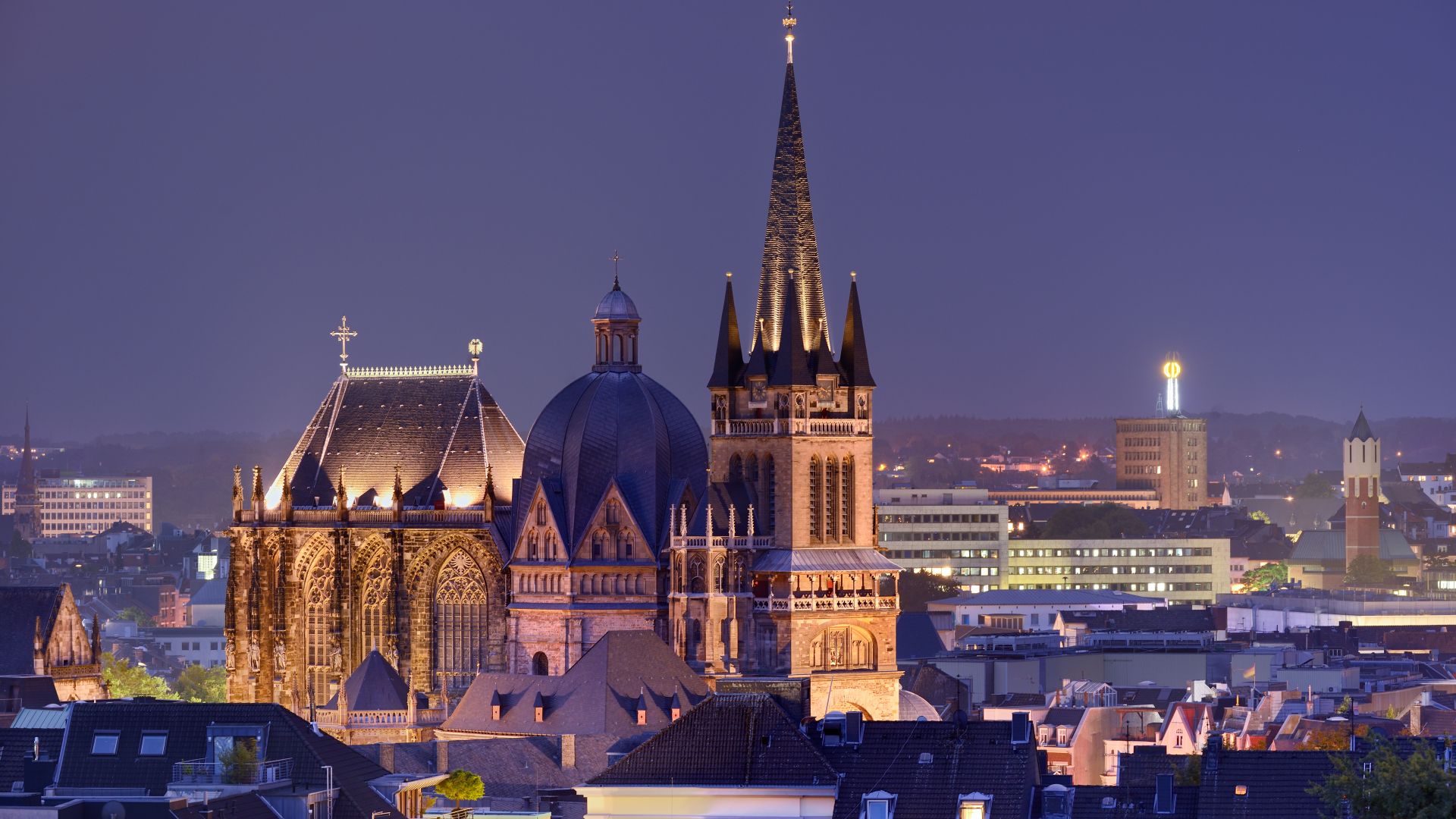
Aachen: Aachen Cathedral illuminated in the evening
©DZT (Francesco Carovillano)
The city in the west of Germany has two neighboring countries: Belgium and the Netherlands. It’s a long way to Liège or Maastricht, and even the nearby Eifel National Park takes longer. The choice of hiking spots is huge, and the 322 meter high point of the three countries Vaalserberg is very popular. History fans will discover a lot in the city, which is also known for thousands of years of bathing tradition, from the historic town hall to the old Elisenbrunnen. Charlemagne left many traces behind, as the King of the Frankish Empire and the Roman Emperor, he founded all time. Aachen was not only the beloved palace of the once most powerful man in Europe, he was also buried there in a beautiful temple in the middle of a magnificent cathedral. Together with the treasury of the neighboring church, considered the most important church treasure north of the Alps, it was the first monument on German soil to be promoted as a UNESCO World Heritage Site.
[ad_2]


